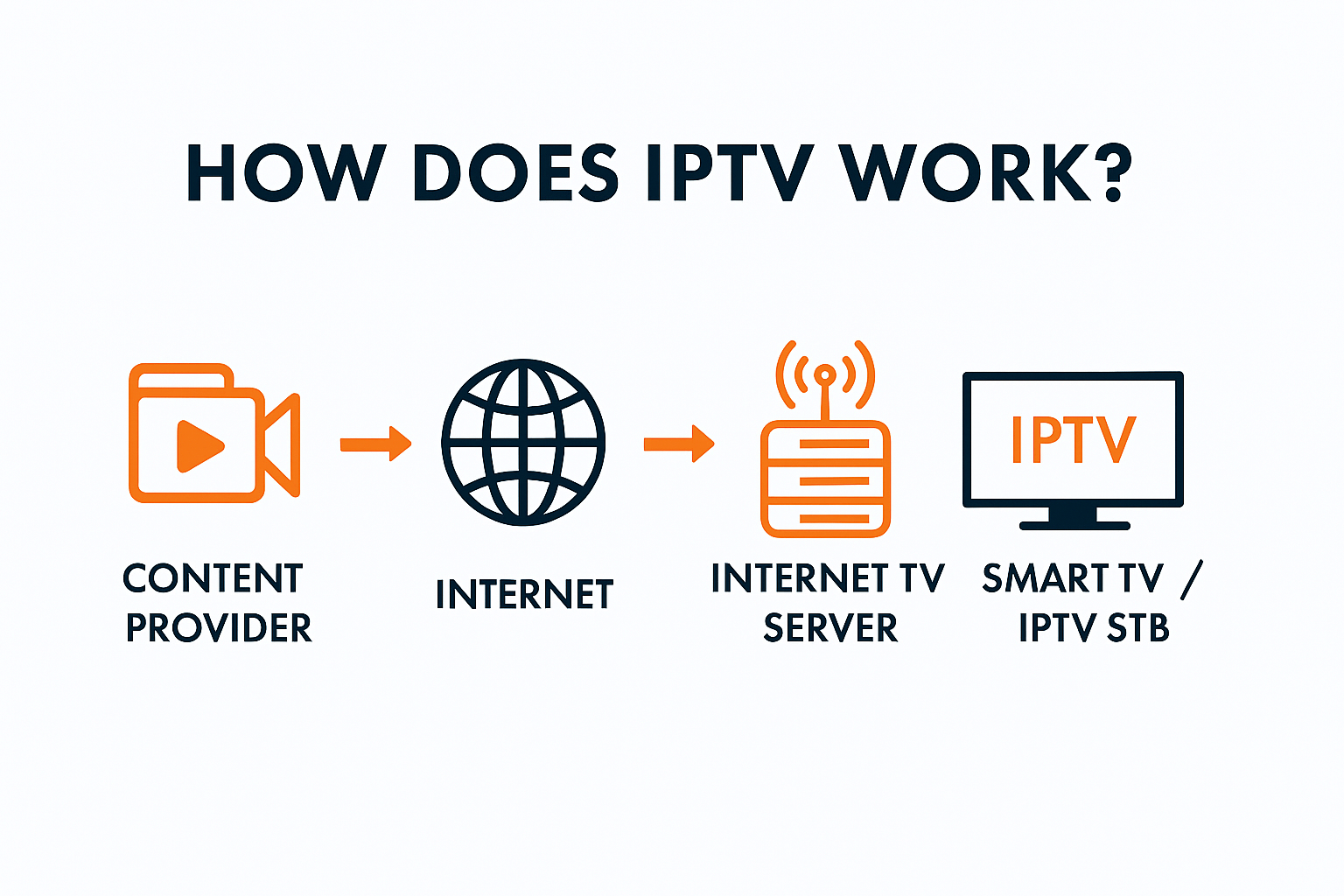📡 Introduction
Television has evolved far beyond antennas and cables. IPTV — short for Internet Protocol Television — streams your favorite channels and shows over the internet, giving you control over what, when, and how you watch. But how does it actually work? Let’s break it down.
🔍 What is IPTV?
IPTV is a digital television delivery method that uses your internet connection instead of traditional broadcast signals. It can provide:
Live TV — watch channels in real time.
Video on Demand (VOD) — choose movies or shows anytime.
Catch‑up TV — replay programs you missed.
⚙️ How IPTV Works — Step by Step
Content Provider Broadcasters, studios, or networks supply the video content — live channels, films, or series.
Internet Transmission The content is encoded into data packets and sent over the internet using streaming protocols (like HTTP Live Streaming or MPEG‑DASH).
IPTV Server A dedicated server stores and manages the content, handles user requests, and ensures smooth delivery.
User Device The stream reaches your Smart TV, set‑top box, or mobile app, where it’s decoded and displayed instantly.
🎯 Why IPTV is Different from Traditional TV
Flexibility: Watch on multiple devices.
Interactivity: Pause, rewind, or fast‑forward live streams.
Personalization: Choose your own channel packages.
Global Access: View content from anywhere with internet.
🔒 Technical & Quality Factors
Bandwidth: Higher speeds mean better quality.
Compression: Efficient codecs (H.264, H.265) reduce buffering.
Security: Licensed providers use encryption to protect streams.
🚀 Benefits for Viewers
No fixed schedules — watch when you want.
Access niche channels unavailable on cable.
Often more affordable than traditional TV packages.
🏁 Conclusion
IPTV transforms television into a flexible, interactive, and global experience. Whether you’re streaming live sports, binge‑watching series, or catching up on missed episodes, IPTV puts the control in your hands.

